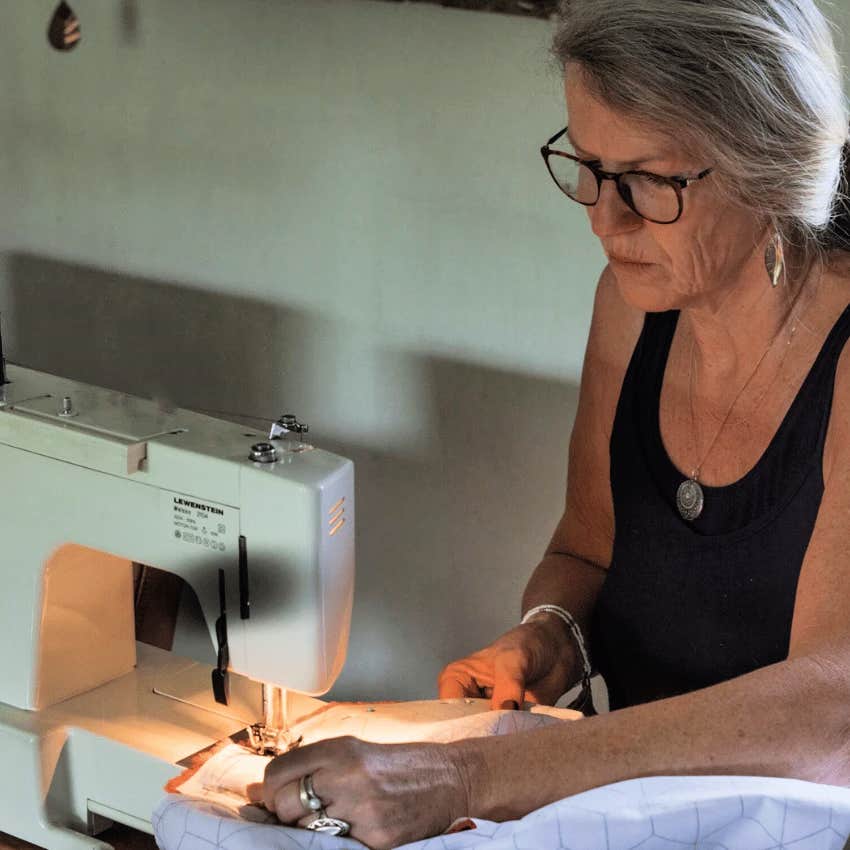11 Life Skills Boomers Absolutely Had To Master But Gen Z Will Never Even Need To Learn
Skills that once meant survival now just make for great trivia at family dinners.
 NDAB Creativity / Shutterstock
NDAB Creativity / Shutterstock Boomers grew up in a world that required a different kind of self-sufficiency than is required of people now. If something broke, you fixed it. If you didn’t know how to do something, you figured it out or learned from someone who did. There was no YouTube tutorial, no app for that, and no overnight shipping. Instead, life demanded practical, hands-on skills that were essential just to get by.
Fast forward a few decades, and things have changed dramatically, and several of the life skills boomers absolutely had to master are things Gen Z will never even need to learn. Gen Z lives in a world where technology, convenience, and outsourcing have made many of those old-school skills unnecessary or even obsolete. It’s not a matter of laziness or lack of curiosity on their part; it’s just a different world.
1. Reading a paper map
 Leah Newhouse from Pexels
Leah Newhouse from Pexels
Before GPS was in every car and phone, people had to rely on paper maps and actually know how to read them. Boomers learned to plan road trips with a paper atlas and navigate cities by unfolding giant maps in the passenger seat. One wrong turn meant pulling over and figuring things out without a voice calmly rerouting you.
According to the Pew Research Center, nine out of ten Americans now use smartphones for directions, meaning physical map reading is quickly becoming a lost skill. This shift has led to concerns about declining spatial memory in younger generations, as GPS takes over the mental work of navigation. For boomers, though, that mental work was standard practice.
2. Balancing a checkbook
Every Boomer learned to keep track of their spending manually, checking off each purchase and doing the math to make sure their bank account matched the ledger. If you didn’t, you risked overdraft fees, or worse.
Today, Gen Z can just glance at an app to see their balance in real time. Financial apps track spending, categorize purchases, and even send alerts when you’re getting close to your budget. According to a Bankrate survey, 63% of smartphone users have at least one financial app.
Balancing a checkbook by hand? Totally unnecessary now, but for boomers back in the day, it was essential.
3. Using a rotary phone
For boomers, making a phone call meant dialing each number by spinning a wheel, waiting for it to spin back, and hoping you didn’t mess up and have to start over. You had to remember the number or write it down somewhere safe. Phones were attached to walls, and there was no texting to say you were on your way.
Gen Z grew up with smartphones, voice assistants, and contact lists that make memorizing phone numbers obsolete. Research from the University of Waterloo even suggests we’re outsourcing our memory to digital tools, and phone numbers are a prime example. It’s hard to imagine Gen Z ever needing to learn how to use a rotary phone.
4. Sewing and mending clothes
 middelveld from Getty Images Signature via Canva
middelveld from Getty Images Signature via Canva
Boomers often learned to sew — patching holes, hemming pants, or even making clothes from scratch. It was a normal household skill, especially when clothes were expensive and fast fashion didn’t exist. If something tore, you fixed it.
Now, clothes are cheaper and easier to replace than to repair, and sewing is mostly a hobby. In a study by YouGov, only one-third of Gen Z reported knowing how to sew on a button. For Boomers, though, a needle and thread were as common as a can opener.
5. Using a card catalog at the library
If you wanted to do research or find a book, you had to use the card catalog, a giant set of drawers filled with index cards organized by subject, title, and author. It required patience and a basic understanding of the Dewey Decimal System.
Gen Z, on the other hand, can search entire library systems from their phones. A Pew Research survey found that over 90% of students use Google as their primary research tool, bypassing traditional library systems entirely. Libraries are still essential, but the skill of using a physical catalog is largely gone.
6. Fixing basic car problems
Boomers were more likely to learn how to change a tire, replace oil, or jumpstart a battery themselves. Cars were simpler, and calling roadside assistance wasn’t always an option. Many people carried a toolbox in the trunk just in case.
Now, modern vehicles are far more complex, with sealed systems and software that requires a professional to touch. AAA memberships and roadside apps have replaced DIY fixes.
7. Writing in cursive
Cursive was once a cornerstone of handwriting education. Boomers learned it in school, used it for everything from letters to legal documents, and practiced it regularly. For many, it was a point of pride.
Now, many schools don’t teach cursive at all. A 2016 report found that cursive was optional in most school districts, and while that number has recently grown again, many students only use print or keyboards. Gen Z is more likely to type a message than handwrite it, and cursive feels like a relic from another time.
8. Using a typewriter
 Ron Lach from Pexels via Canva
Ron Lach from Pexels via Canva
Before word processors and laptops, Boomers typed everything from school papers to resumes on clunky, loud typewriters. There was no backspace, just correction tape or starting over. You had to get it right the first time, or at least close.
Today, most Gen Zers have never even seen a typewriter in person. Auto-correct, spell check, and Google Docs have changed how we write entirely. Digital tools have made it easier to revise and collaborate in real-time, something boomers had to do with white-out and carbon paper.
9. Waiting for photos to develop
You took a photo, and then you waited days, sometimes weeks, to see how it turned out. Boomers had to plan shots carefully, because film was limited and developing it cost money.
Now, Gen Z takes hundreds of photos in a day and sees them instantly. No waiting, no guessing. Most of Gen Z uses smartphones to take photos, and only a tiny percentage use physical cameras at all. The idea of not seeing a picture right away is almost unimaginable to them.
10. Memorizing phone numbers and addresses
Boomers could rattle off dozens of phone numbers and addresses without blinking. You had to. It was the only way to stay in touch. Now, smartphones store all that information automatically.
According to a Kaspersky Lab study, over half of people under 25 can’t remember more than two phone numbers off the top of their heads. It’s not laziness—it’s just not necessary anymore. Gen Z relies on their devices, and their brains are free to remember other things.
11. Using a TV antenna or adjusting rabbit ears
Boomers grew up fiddling with metal antennas to get a clear TV signal. Sometimes it meant climbing on the roof or standing just right in the living room to catch a broadcast. Channels were limited, and the signal wasn’t always reliable.
Streaming has made all of that unnecessary. Gen Z can watch what they want, when they want, with no antenna in sight. A 2023 Nielsen report found that streaming now accounts for over 38% of total TV viewing time in the U.S., far surpassing traditional broadcast methods.
Executive Editor Arianna Jeret, MA/MSW, is a writer, former family law mediator, and recognized expert on relationships and conflict resolution. Her work has been featured in Cosmopolitan, The Huffington Post, Yahoo, MSN, Bustle, Parents and more.

